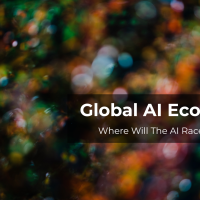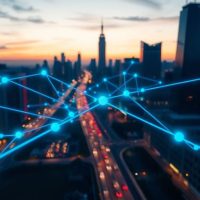AI is just chatbots and self-driving cars? Think again. This tech is about to fuel $13 trillion into the global economy by 2030, so yeah, everyone’s fighting for the crown. Governments are investing billions into AI, startups are popping up like crazy, and VCs are betting big on the next game-changer. So… who’s leading the charge?
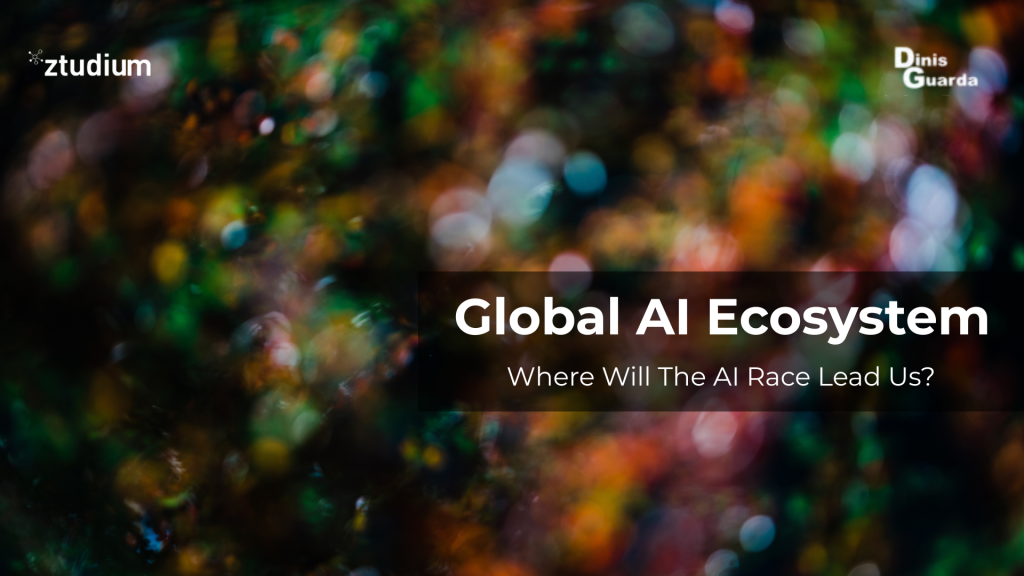
According to a McKinsey report, AI is expected to add $13 trillion to the global economy by 2030.
It’s no wonder nations and corporations are scrambling to dominate this space. But here’s the real question: Who’s actually winning the AI race?
Is it the US, with Silicon Valley’s tech titans and Pentagon-backed projects? Or China, sprinting ahead with state-funded AI labs and a flood of patents? Maybe it’s Europe, balancing innovation with ethics, or even dark horses like the UAE, betting big on AI to pivot from oil to algorithms.
And let’s not forget the VCs and startups because behind every AI revolution, there’s a venture capitalist there is huge funding support.
From DeepMind’s breakthroughs to NVIDIA’s AI chips, from OpenAI’s chatbots to Tesla’s self-driving cars, this isn’t just about who’s got the smartest tech, it’s about who controls the future.
The global AI market is expected to grow at a staggering 38.1% compound annual growth rate (CAGR), reaching $1.81 trillion by 2030, according to Grand View Research. And it’s not just the tech giants leading the charge; smaller startups and VCs are making huge strides in AI research too. It’s an exciting time for AI, and there’s so much happening that it’s hard not to feel the buzz!
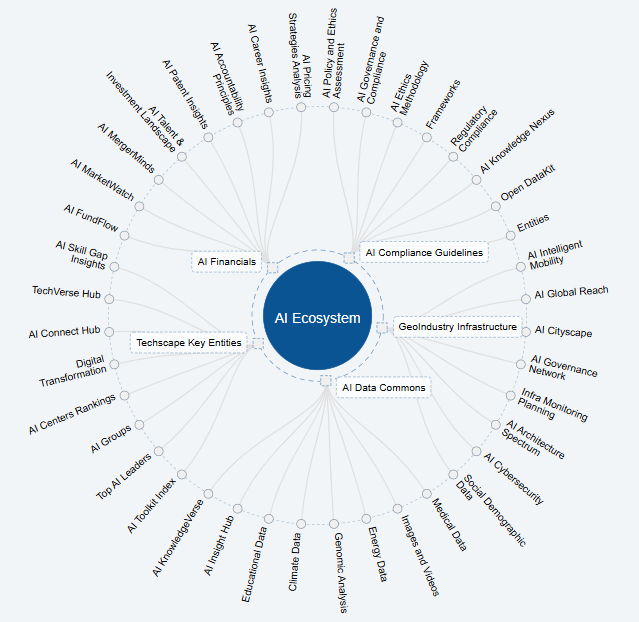
What is an AI ecosystem?
When we talk about AI, we often focus on individual AI-powered systems. But, to truly unlock its potential, we need to think about the bigger picture, the ecosystem. In an AI ecosystem, it’s not just about one system, but about many systems working together.
So, how does AI fit into the world of logistics and supply chains? The key is data, and lots of it.
Here’s how it works:
- Start with the data: You feed your AI system with a large amount of data from your company’s supply chain. This data could include anything from inventory levels to shipping times, and much more.
- Let the AI do its thing: The AI then processes this data and starts analysing it. You can ask the system questions, or use it to identify the best next steps. It helps you make decisions based on real-time data and trends, rather than relying on guesswork.
- Collaborate with others: Once your AI is up and running, you can share the data and insights with other organisations involved in the supply chain. These organisations should be doing the same thing, feeding their AI systems data and using it to make informed decisions. When multiple companies share and collaborate on this data, you create an ecosystem where everyone works together, rather than competing against each other.
And that, in a nutshell, is what an AI ecosystem is all about. It’s about bringing together various AI systems from different organisations and combining their data to create something greater than the sum of its parts.
Government AI Ecosystems: A Global Push
When we talk about AI, it’s easy to focus on the big corporations that are leading the charge. But we can’t forget the critical role governments play in pushing AI forward.
Countries around the world are recognising that AI is key not only for tech advancement but also for staying competitive on the global stage.
It’s not just about keeping up with the latest gadgets, AI has the potential to boost national security, create jobs, and improve economies. That’s why governments are putting serious money into AI.
Take the United States, for example. The government has launched initiatives like the National AI Initiative Act of 2020 to bring together efforts across various agencies and make AI a top priority.
Over in China, AI is such a big deal that it’s part of their national strategy, with the country aiming to become the global leader in AI by 2030.
Even the European Union has its own AI Strategy for Europe, which is all about creating the right regulations and ensuring that AI development stays safe, ethical, and beneficial for society.
It’s clear that governments are deeply invested in AI’s growth.
But it’s not just about funding research. Governments are also responsible for setting up the rules that guide AI development. This means creating policies around data privacy, ensuring that algorithms are transparent, and making sure AI is developed safely.
It’s all about striking the right balance, encouraging innovation while protecting citizens and society. The collaboration between the public and private sectors is creating a vibrant environment that’s helping AI evolve quickly, whether that’s in healthcare, education, defense, or autonomous vehicles.
Governments worldwide are pouring billions into AI to stay competitive:
- USA: The CHIPS Act and National AI Initiative fuel research and semiconductor production.
- China: Aggressive AI strategy aiming for global dominance by 2030.
- EU: Strict AI regulations (AI Act) but strong funding in ethical AI.
- UK: Home to DeepMind and a thriving AI startup scene.
- UAE & Saudi Arabia: Investing heavily in AI to diversify beyond oil.
Regional AI Hubs
The global AI ecosystem isn’t just limited to a few places, there are a number of regional powerhouses where AI is thriving, and each has its own unique strengths.
Let’s take a quick tour around the world’s most exciting AI hubs.
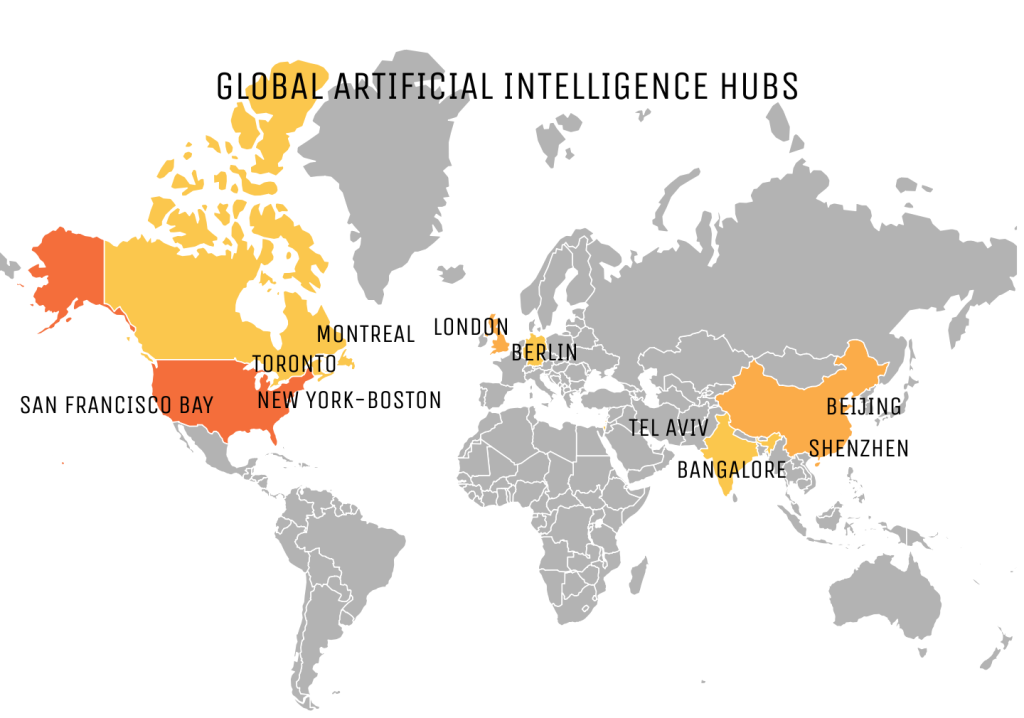
Silicon Valley (USA)
We can’t talk about AI without mentioning Silicon Valley.
Often regarded as the birthplace of modern AI, this region is home to some of the biggest tech giants like Google, Apple, and Tesla. In fact, companies such as Google DeepMind and OpenAI have been leading the charge in AI research, focusing on everything from natural language processing to autonomous driving.
According to CB Insights, Silicon Valley companies received over $17 billion in AI funding last year alone, making it a critical hub for both investment and talent.
Shenzhen and Beijing (China)
Next, we’ve got Shenzhen and Beijing, which are at the heart of China’s AI revolution.
The Chinese government has heavily invested in AI, with plans to become a global leader by 2030. Shenzhen is known for its booming tech parks and innovation hubs, where companies like Huawei and Tencent are pushing boundaries in AI and 5G.
Meanwhile, Beijing is a hotbed for AI research, with world-class institutions like Tsinghua University and Baidu leading the way.
Berlin, London, and Paris (Europe)
Over in Europe, Berlin, London, and Paris are emerging as key AI centres. These cities are not just tech hubs; they’re also heavily focused on AI ethics and regulation. The European Union is spearheading efforts to create global AI regulations, making these cities central to the conversation on ethical AI.
London also leads in AI talent, with institutions like UCL and Imperial College nurturing the next generation of AI researchers.
Bangalore and Hyderabad (India)
Bangalore and Hyderabad have quickly emerged as India’s AI powerhouses. With companies like Infosys and Wipro investing heavily in AI, these cities are drawing both talent and investment.
According to a 2023 report by NASSCOM, India is expected to have over 200,000 AI professionals by 2025.
Tel Aviv (Israel)
Lastly, Tel Aviv in Israel is becoming a key player in AI, particularly in cybersecurity and defence. Known for its innovative AI startups, Israel is rapidly growing as a leader in AI technologies for security and military applications, with companies like Mobileye leading in autonomous driving.
Talent development and education in AI
What does the landscape look like for AI education and talent?
Well, AI is one of the fastest-growing fields in terms of job demand. According to the World Economic Forum, AI-related job roles have grown by an incredible 74% in the past four years.
Over the last few years, the world has seen an explosion of positions for data scientists, machine learning engineers, and AI researchers.
It’s no surprise that top universities are stepping up to meet this demand. In the US, institutions like MIT, Stanford, and Carnegie Mellon University have long been at the forefront of AI research and education.
For instance, MIT’s Computer Science and Artificial Intelligence Laboratory (CSAIL) is one of the largest AI research facilities in the world, driving out some of the brightest minds in the field.
Similarly, Stanford’s AI Lab focuses on everything from machine learning to computer vision, creating talent that goes on to lead the charge in both academia and the tech industry.
Across the Atlantic, Oxford and Cambridge in the UK are also making their mark. Oxford’s AI Programme focuses on developing AI professionals who can think critically about the ethical implications of AI, which is a growing concern in the industry.
In Europe, ETH Zurich and University College London (UCL) are among the best institutions offering specialised AI courses and attracting top-tier international students.
But it’s not just about universities.
The rise of boot camps, online courses, and certifications is helping fill the talent gap. Platforms like Coursera and edX have made AI education more accessible than ever. Google AI offers free courses and workshops for anyone interested in AI, while boot camps like DataCamp provide intensive, hands-on training in machine learning and data science, allowing people to upskill quickly.
Where will this AI race lead us?
The AI race is heating up, with tech giants and governments pouring billions into research, while VCs hunt for the next big breakthrough. Whether it’s Microsoft’s AI dominance, NVIDIA’s hardware supremacy, or Anthropic’s ethical AI push, the ecosystem is evolving rapidly.
If you’re an entrepreneur, watching where these investors place their bets could give you a clue about the next big AI trend. And if you’re just an AI enthusiast, well—now you know who’s shaping the future.
Who do you think will lead AI in the next decade?

Dinis Guarda is an author, academic, influencer, serial entrepreneur, and leader in 4IR, AI, Fintech, digital transformation, and Blockchain. Dinis has created various companies such as Ztudium tech platform; founder of global digital platform directory openbusinesscouncil.org; digital transformation platform to empower, guide and index cities citiesabc.com and fashion technology platform fashionabc.org. He is also the publisher of intelligenthq.com, hedgethink.com and tradersdna.com. He has been working with the likes of UN / UNITAR, UNESCO, European Space Agency, Davos WEF, Philips, Saxo Bank, Mastercard, Barclays, and governments all over the world.
With over two decades of experience in international business, C-level positions, and digital transformation, Dinis has worked with new tech, cryptocurrencies, driven ICOs, regulation, compliance, and legal international processes, and has created a bank, and been involved in the inception of some of the top 100 digital currencies.
He creates and helps build ventures focused on global growth, 360 digital strategies, sustainable innovation, Blockchain, Fintech, AI and new emerging business models such as ICOs / tokenomics.
Dinis is the founder/CEO of ztudium that manages blocksdna / lifesdna. These products and platforms offer multiple AI P2P, fintech, blockchain, search engine and PaaS solutions in consumer wellness healthcare and life style with a global team of experts and universities.
He is the founder of coinsdna a new swiss regulated, Swiss based, institutional grade token and cryptocurrencies blockchain exchange. He is founder of DragonBloc a blockchain, AI, Fintech fund and co-founder of Freedomee project.
Dinis is the author of various books. He has published different books such “4IR AI Blockchain Fintech IoT Reinventing a Nation”, “How Businesses and Governments can Prosper with Fintech, Blockchain and AI?”, also the bigger case study and book (400 pages) “Blockchain, AI and Crypto Economics – The Next Tsunami?” last the “Tokenomics and ICOs – How to be good at the new digital world of finance / Crypto” was launched in 2018.
Some of the companies Dinis created or has been involved have reached over 1 USD billions in valuation. Dinis has advised and was responsible for some top financial organisations, 100 cryptocurrencies worldwide and Fortune 500 companies.
Dinis is involved as a strategist, board member and advisor with the payments, lifestyle, blockchain reward community app Glance technologies, for whom he built the blockchain messaging / payment / loyalty software Blockimpact, the seminal Hyperloop Transportations project, Kora, and blockchain cybersecurity Privus.
He is listed in various global fintech, blockchain, AI, social media industry top lists as an influencer in position top 10/20 within 100 rankings: such as Top People In Blockchain | Cointelegraph https://top.cointelegraph.com/ and https://cryptoweekly.co/100/ .
Between 2014 and 2015 he was involved in creating a fabbanking.com a digital bank between Asia and Africa as Chief Commercial Officer and Marketing Officer responsible for all legal, tech and business development. Between 2009 and 2010 he was the founder of one of the world first fintech, social trading platforms tradingfloor.com for Saxo Bank.
He is a shareholder of the fintech social money transfer app Moneymailme and math edutech gamification children’s app Gozoa.
He has been a lecturer at Copenhagen Business School, Groupe INSEEC/Monaco University and other leading world universities.





